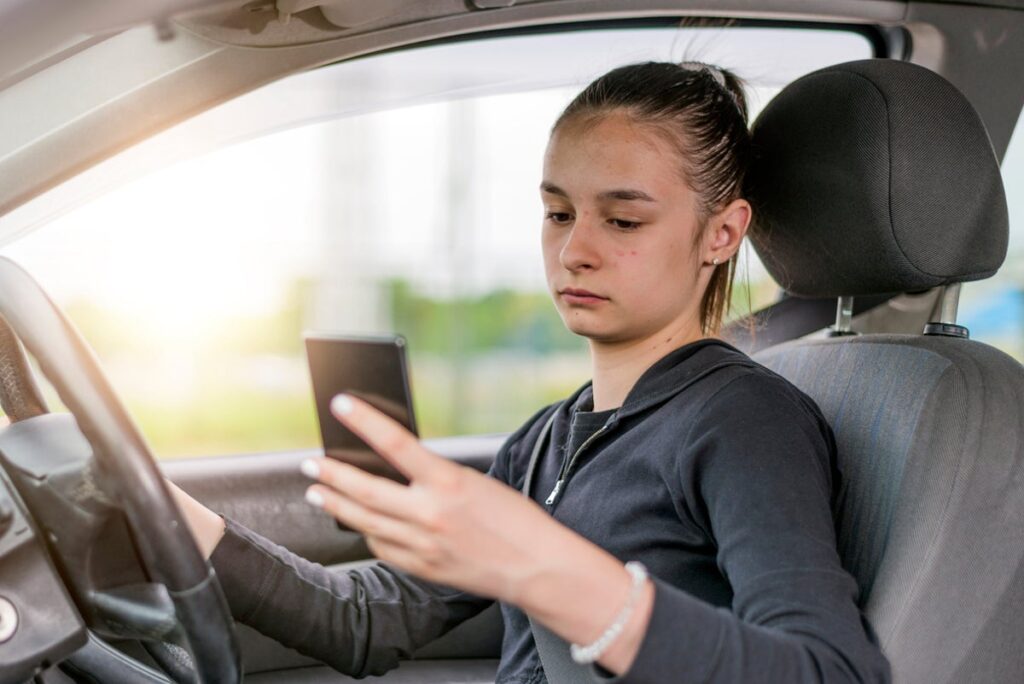
Teenagers are spending a significant portion of their driving time distracted by their phones, according to a new analysis that highlights a growing concern on the roads. The study reveals that teens spend an average of 20 percent of their time behind the wheel engaged with their phones, a behavior that could have deadly consequences.
This alarming statistic comes against the backdrop of more than 3,000 American fatalities annually due to crashes involving distracted drivers. On a daily basis, nine lives are lost to this preventable cause. Teen drivers, in particular, are at a heightened risk for distracted driving compared to other age groups.
Understanding the Risks
Data from the Centers for Disease Control and Prevention indicates that in 2019, a higher percentage of fatal crashes involving distracted drivers were linked to those aged 15 to 20 than to drivers aged 21 and older. A study by AAA further supports this, finding that driver inattention, or engagement in other activities, was a factor in 58 percent of teen crashes.
“Driving distracted doesn’t just put the driver at risk of injury or death; it puts everyone else on the road in danger of an accident,” said Dr. Rebecca Robbins, a researcher at Boston’s Brigham and Women’s Hospital.
Dr. Robbins, a founding member of Mass General Brigham, is the lead author of the research published in the journal Traffic Injury Prevention. The study, co-authored by researchers from Germany and other U.S. universities, was funded by the Casey Feldman Foundation, established in memory of a young woman killed by a distracted driver in 2009.
Insights from the Study
The research involved 20 interviews with high school students and a survey of over 1,100 teen drivers across the United States. The goal was to identify factors that influence teens to engage in distracted driving. Results showed that teens spend an average of 21.1 percent of each trip looking at their phones, with 26.5 percent of glances away from the road lasting two seconds or longer—a duration that significantly increases crash risk.
According to the National Highway Traffic Safety Administration, taking your eyes off the road for five seconds at 55 mph is akin to driving the length of a football field blindfolded.
The primary reasons for distraction were entertainment, texting, and navigation. Although teens recognize the dangers of distracted driving, they also perceive it as a common behavior among their peers.
Addressing the Epidemic
Despite more than 35 states banning all phone use for young drivers, a previous national study found that 91.8 percent of adolescents reported regularly engaging in at least one distracted driving behavior per trip. This highlights a disconnect between awareness and action.
“We found that while young drivers recognize the advantages of using smartphone features like GPS, they also understand the heightened risk of accidents associated with distracted driving,” Robbins noted.
Robbins suggests strategies to mitigate this dangerous behavior, such as encouraging the use of ‘Do Not Disturb’ mode, keeping phones out of reach, and ensuring teens get adequate sleep.
Looking Forward
The findings of this study underscore the urgent need for effective interventions to prevent distracted driving among teens. As technology continues to evolve, so too must our strategies to ensure road safety. Educators, parents, and policymakers must work together to instill safe driving habits in young drivers.
With the potential for more stringent laws and increased public awareness campaigns, the hope is to reduce the number of distracted driving incidents and save lives. As the conversation around distracted driving continues, the focus remains on creating a safer environment for all road users.






